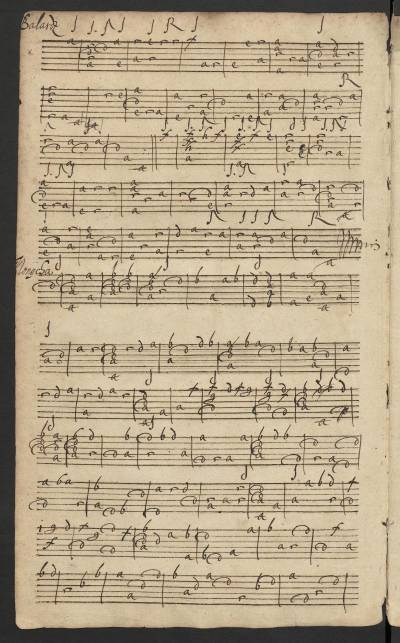tablature
The history of tablature dates back to the late Middle Ages. It was „for a long time the generic name of the musical signs after which a piece could be played“.1) After musical notation became generally accepted, it was little used, but since the emergence of ukulele music in the early 20th Century, it is now mainly used for the reproduction (notation) of music for stringed instruments where the notes are represented as numbers or letters in a rectangular system. Horizontal lines represent the strings and vertical lines represent the frets of the instrument. chords are written on top of each other. The length of a note is indicated by necks of notes and dots. The medium on which all this was written was called  tabula (panel), hence the name tablature.
tabula (panel), hence the name tablature.
ASCII Tablature
ASCII Tablature for Happy Birthday to You
xA|-----0---3-2-|-----0---5-3-|-----10-7---2-0-|-8-8-7-3-5-3--| xE|-----0-------|-----1-------|-----0------1---|-----0-----0--| xC|-----0-------|-----0-------|-----0------0---|-----0-----0--| xG|-0-0-0-0-----|-0-0-2-0-----|-0-0-0----5-0---|-----0-----0--|
(Source: Uketabs)
Special signs
Assessment
"Useful for reentrant instruments"
Music pedagogue Randy Dary remarks:
Dary points out, however, that in practice tablature is often counfounded with simple chord notation above the lyrics, which are often also mistakenly referred to as TAB.
"Infantile"
In 1938, cultural philosopher Theodor W. Adorno called tablatures „weird diagrams“ which reduced music for listeners „regressed“ by entertainment culture to „a kind of musical children's language“:2)
They relate to guitar, ukulele and banjo – as well as the accordion of tangos, infantile instruments, compared to the piano – and are intended for players who cannot read the notes.
However, Adorno ignores the centuries-long tradition of musical tablature.
History
For the most common European stringed instrument, the lute, various types of tablature were made in the 15th century. The horizontal lines each represented a string on which numbers or letters were written that stood for vertical [en:vok:bund]s resting on them. Elements with which the fingers of the fret hand or the type of stroke were added. The tablature is therefore a picking notation which should primarily facilitate the practice of playing. See also chord sheet and lead sheet. Three other reasons contributed to its dissemination: that with plucked instruments, the duration of a tone is difficult to control anyway, making precise notation superfluous or even impossible; that tablature in manuscripts requires less space; and that it was much easier to print.5) The common practice to rearrange polophonic music for soto lute and print it as tabulature was called intabulation.6)
In the 16th century, the organ tablature was developed in Germany in which the individual organ voices were written on top of each other as a sign, which saved a lot of space and made playing easier. In mid-thth century, tablature systems for zither and guitar also emerged, both of which initially had four strings. In the 20th century, the ukulele tablature was added, in which the principle of tablature presents itself in perfection:
The twentieth-century 'pop' notation for ukelele is also a graphic tablature, with the same sort of advantage to the unskilled player. The grid which appears for each chord is literally a picture of the fingerboard up to the 4th fret, and the dots show the positions of the fingers. The frets (which are of metal) are shown by the horizontal lines. As long as only the first four frets are needed, therefore, this notation is a more direct one than any system requiring numbering or lettering of the frets.7)
Legal Aspects
If one evaluates the tablature of a work published otherwise in notation as a practical playing device (after all, its main goal is to make a piece of music playable on a particular instrument), the question arises as to whether its editing is protected by copyright or whether it is is a (possibly punishable) copy. Under U.S. law, the publication of tablatures or chord sheets for educational or scientific purposes is considered fair use in the sense of copyright law, particularly because it does not cause any economic damage and because the consent of the copyright holders can in principle be assumed.9)
References
- Richard Rastall: The Notation of Western Music. An Introduction. J.M. Dent & Sons: London, Melbourne, Toronto 1983
Links
- Alte Gitarren- & Lautenmusik – Sehr hilfreiche Beschreibungen von René Senn




